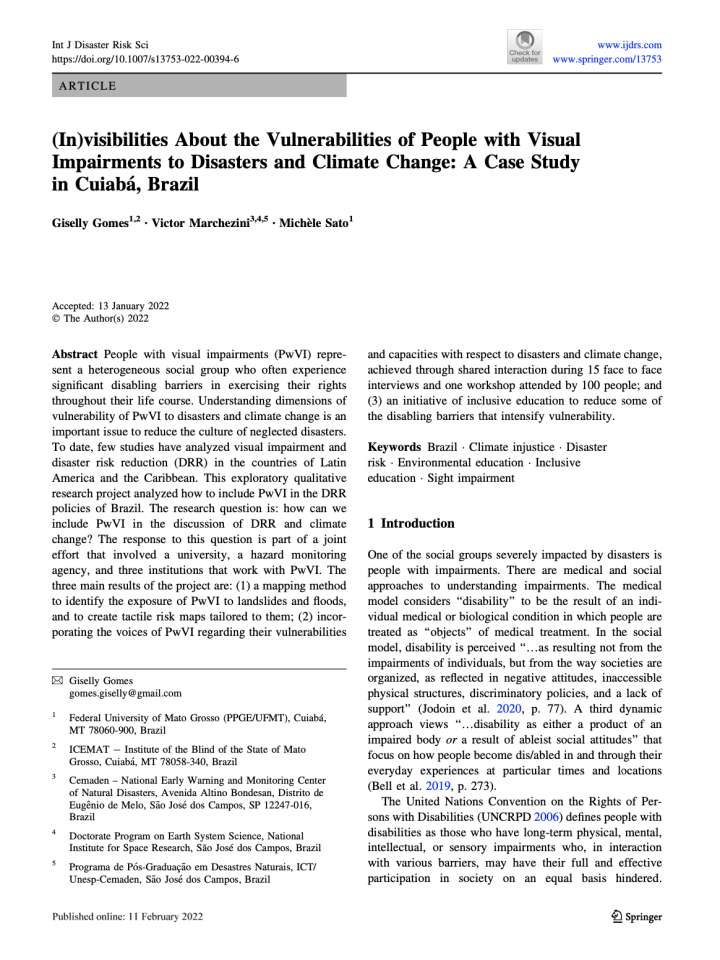(In)visibilities about the vulnerabilities of people with visual impairments to disasters and climate change: A case study in Cuiabá, Brazil
This exploratory qualitative research project analyzed how to include People with visual impairments (PwVI) in the DRR policies of Brazil. PwVI represent a heterogeneous social group who often experience significant disabling barriers in exercising their rights throughout their life course. Understanding dimensions of vulnerability of PwVI to disasters and climate change is an important issue to reduce the culture of neglected disasters. To date, few studies have analyzed visual impairment and disaster risk reduction (DRR) in the countries of Latin America and the Caribbean. The research question is: how can we include PwVI in the discussion of DRR and climate change? The response to this question is part of a joint effort that involved a university, a hazard monitoring agency, and three institutions that work with PwVI.
The three main results of the project are:
- A mapping method to identify the exposure of PwVI to landslides and floods, and to create tactile risk maps tailored to them;
- Incorporating the voices of PwVI regarding their vulnerabilities and capacities with respect to disasters and climate change, achieved through shared interaction during 15 face to face interviews and one workshop attended by 100 people; and
- An initiative of inclusive education to reduce some of the disabling barriers that intensify vulnerability.
Explore further

